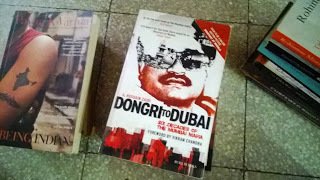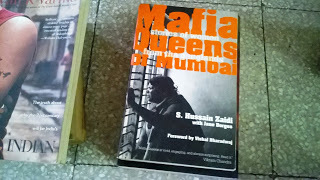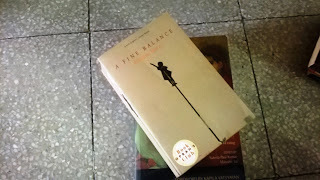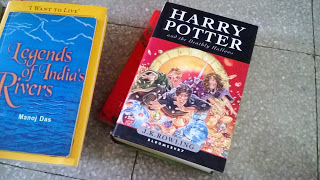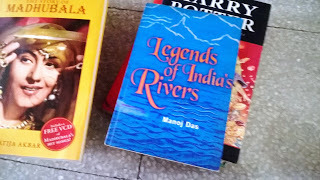Dibyajyoti Sarma's Blog, page 31
December 17, 2015
Ah, the new issue of ‘Indian Literature’, the Sahitya Aka...
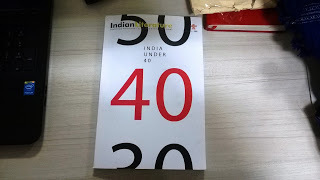
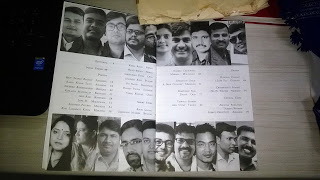
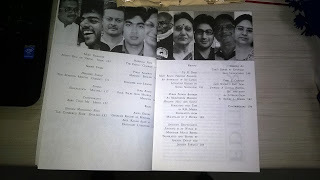
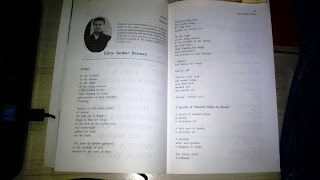
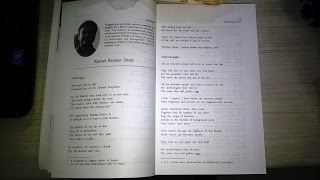
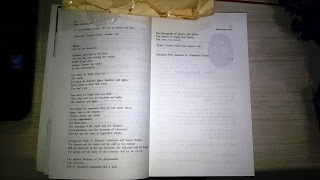 Ah, the new issue of ‘Indian Literature’, the Sahitya Akamedi’s Bi-Monthly Journal (Sep/Oct 2015; issue 289) is on my desk, and I cannot stop smiling. The issue, titled, ‘India Under 40’, opens with the English translations of Assamese poems by two of my friends, Bijoy Sankar Barman and Kamal Kumar Tanti. The issue also features an incisive article on women in Assamese writing by Arindam Borkakati, whom I used to know when we were doing our Masters. Can I just add that I had whale of a time translating Kamal’s challenging and intriguing poems?
Ah, the new issue of ‘Indian Literature’, the Sahitya Akamedi’s Bi-Monthly Journal (Sep/Oct 2015; issue 289) is on my desk, and I cannot stop smiling. The issue, titled, ‘India Under 40’, opens with the English translations of Assamese poems by two of my friends, Bijoy Sankar Barman and Kamal Kumar Tanti. The issue also features an incisive article on women in Assamese writing by Arindam Borkakati, whom I used to know when we were doing our Masters. Can I just add that I had whale of a time translating Kamal’s challenging and intriguing poems?
Published on December 17, 2015 04:42
The vanished path illuminated by drawings
Review of The Vanished Path: A Graphic Travelogue by Bharath Murthy (New Delhi, HarperCollins Publishers, 2015)
By Dibyajyoti Sarma
With the air rife with cultural dissent, this is perhaps the right time to read and appreciate Bharath Murthy’s breezy and sharp Manga-like graphic novel The Vanished Path.
While Buddhism remains the fastest-growing religion in the world, it’s ironic how in the country of its origin, the teachings of the Buddha is largely forgotten. Today, we discuss Buddhism in the context of the Dalit issues, as political shorthand for caste issues and that’s that.
Yet, the historical Buddhist sites, from Gaya to Sarnath, dotting Uttar Pradesh and Bihar, are the major tourist destinations visited by thousands of Buddhists from all over the world. These locations are part of the Indian geography, yet they seem to exist in a separate time-space continuum, where the idea of the ‘real India’ is suspended.
What happens when a recently converted Indian Buddhist travels to these sites? This is what The Vanished Path is all about.
After his conversation, Murthy, who teaches film direction at the Film and Television Institute of India, Pune, undertakes a journey from Sarnath to Nalanda, accompanied by his wife Alka, and returns to document his experiences in the form of a graphic novel.
It is the graphic element that gives the book, which has been nominated for Shakti Bhat First Book Award, its heft and power. Murthy is clearly inspired by the art of the Japanese Manga comics, which celebrates black and white line drawings, focusing on impressionistic description than real representation.
So, we have the couple navigating their way through hinterland India, by train, taxi, auto and other means, meeting assorted characters on the way, and visiting the landmarks associated with the life of Siddhattha Gotama. This modern track is interspersed with historical facts and musings from Buddha’s life.
Murthy’s narrative is largely straightforward. He goes, observes and reports. Yet, the political undertone is unmistakable. It is no accident that he is in Varanasi on the day the Ayodhya dispute verdict was to be announced. He observes how Buddhist Asian countries have invested heavily on these sites. He meets a Dalit kitchen help in one of the lodges, who tells him that though he is Buddhist, he did not really know the teachings of the Buddha.
Yet, what’s fascinating about the book are the drawings, the monuments, the scenes from rural India, and even the retelling of Buddha’s life. In all this, Murthy makes a curiously interesting choice of representing Buddha not as human, but as the dharma wheel.
While the country is seeing resurgence in publishing in the recent years, we still have very few graphic novels. For this reason alone, The Vanished Path is an important book, and the best part is that you can finish it on one sitting.
(In the years, HarperCollins India has published some groundbreaking graphic novels, including Amruta Patil’s dazzling Adi Parva. For the best Japanese Manga based on India, check out Yukichi Yamamatsu’s Stupid Guy Goes To India.)
(The book review was first published in Sakal Times.)
By Dibyajyoti Sarma
With the air rife with cultural dissent, this is perhaps the right time to read and appreciate Bharath Murthy’s breezy and sharp Manga-like graphic novel The Vanished Path.
While Buddhism remains the fastest-growing religion in the world, it’s ironic how in the country of its origin, the teachings of the Buddha is largely forgotten. Today, we discuss Buddhism in the context of the Dalit issues, as political shorthand for caste issues and that’s that.
Yet, the historical Buddhist sites, from Gaya to Sarnath, dotting Uttar Pradesh and Bihar, are the major tourist destinations visited by thousands of Buddhists from all over the world. These locations are part of the Indian geography, yet they seem to exist in a separate time-space continuum, where the idea of the ‘real India’ is suspended.
What happens when a recently converted Indian Buddhist travels to these sites? This is what The Vanished Path is all about.
After his conversation, Murthy, who teaches film direction at the Film and Television Institute of India, Pune, undertakes a journey from Sarnath to Nalanda, accompanied by his wife Alka, and returns to document his experiences in the form of a graphic novel.
It is the graphic element that gives the book, which has been nominated for Shakti Bhat First Book Award, its heft and power. Murthy is clearly inspired by the art of the Japanese Manga comics, which celebrates black and white line drawings, focusing on impressionistic description than real representation.
So, we have the couple navigating their way through hinterland India, by train, taxi, auto and other means, meeting assorted characters on the way, and visiting the landmarks associated with the life of Siddhattha Gotama. This modern track is interspersed with historical facts and musings from Buddha’s life.
Murthy’s narrative is largely straightforward. He goes, observes and reports. Yet, the political undertone is unmistakable. It is no accident that he is in Varanasi on the day the Ayodhya dispute verdict was to be announced. He observes how Buddhist Asian countries have invested heavily on these sites. He meets a Dalit kitchen help in one of the lodges, who tells him that though he is Buddhist, he did not really know the teachings of the Buddha.
Yet, what’s fascinating about the book are the drawings, the monuments, the scenes from rural India, and even the retelling of Buddha’s life. In all this, Murthy makes a curiously interesting choice of representing Buddha not as human, but as the dharma wheel.
While the country is seeing resurgence in publishing in the recent years, we still have very few graphic novels. For this reason alone, The Vanished Path is an important book, and the best part is that you can finish it on one sitting.
(In the years, HarperCollins India has published some groundbreaking graphic novels, including Amruta Patil’s dazzling Adi Parva. For the best Japanese Manga based on India, check out Yukichi Yamamatsu’s Stupid Guy Goes To India.)
(The book review was first published in Sakal Times.)
Published on December 17, 2015 04:40
'Every city should have a shelf full of detective novels dedicated to it’
‘Every city should have a shelf full of detective novels dedicated to it’
Author of Swedish origin, Zac O’Yeah, who has made Bengaluru his home, talks about his new novel, Hari: A Hero for Hire and explains why it is equivalent to a popular masala movie.
How did you think of a working class sleuth in the cyber capital of India?
Well, if I hadn’t stepped off the train at City Junction station, Bengaluru in 1992 and checked into the cheapest lodge in the Majestic area, I don’t think I would have been a successful novelist today. I spent my days in those nameless second-hand bookstalls that used to proliferate south of Kempegowda Circle, dreaming that I might write a book that would be on display there someday.
Another reason why I chose to set my book series here is because until fairly recently, detective fiction used to be dominated by Anglo-American locations and concerns. Nowadays, you have globally bestselling detective novels set in places like Botswana, Thailand or Sweden. So, why not Bengaluru? I strongly felt that every self respecting city should have a shelf full of detective novels dedicated to it.
Also, having Hari as a reformed tout character seemed like a great idea because a tout would know every nook and cranny of the city. Hari speaks English well, is good at calculations and in many ways a perfect detective. So Hari, the private eye, became my key to unlock the city and chronicle it.
I doubt I could have imagined the character Hari Majestic without Bengaluru, the city where I’ve lived for the last 15 years after leaving Sweden.
You seem to be more interested in how your characters behave than the whodunit.
You’re possibly right. I wanted to avoid creating a stereotypical literary detective — the kind you meet in Swedish or Western detective novels. Over the years, I have seen plenty of Kannada action movies and become a fan of Upendra, the king of local cool and one-liners. I wondered what a literary equivalent of such films might read like. I, therefore, set out to write a romantic tragi-comic thriller in Bengaluru. It seemed like the most logical thing to do.
The book is filled with observational humour.
A detective novel should ideally be out in the streets, taking its reader through narrow alleys, pointing out interesting things to look at and places to visit, and somewhere amongst all that, there will be the clues to cracking the case. Reading the newspapers every day in Bengaluru is an endless source of inspiration. There are so many strange stories reported all the time and so for a novelist, it obviously sets the imagination on fire.
How do you combine crime and comedy?
I have no clue. I personally don’t consider myself a ‘humourist’. It just so happens that everything becomes very weird when I write it down. Essentially comedy and crime should not be combined because it’s a recipe for disaster. Lots of readers find it hard to accept. But in Bollywood films, they are able to combine action movies with humorous elements, or comedies with thrillers, so one needs to try to expand the genre and broaden it by adding comedy.
What’s next for Hari and his sidekicks?
A third book is in the works, it might come in 2017. And in 2016, there’s going to be a movie version of Mr Majestic! The Tout of Bengaluru, the first novel. I have been told that they are writing the screenplay right now and expect to start shooting soon.
(The interview was first published in Sakal Times, Pune on 28 November 2015. View the Story .)
Author of Swedish origin, Zac O’Yeah, who has made Bengaluru his home, talks about his new novel, Hari: A Hero for Hire and explains why it is equivalent to a popular masala movie.
How did you think of a working class sleuth in the cyber capital of India?
Well, if I hadn’t stepped off the train at City Junction station, Bengaluru in 1992 and checked into the cheapest lodge in the Majestic area, I don’t think I would have been a successful novelist today. I spent my days in those nameless second-hand bookstalls that used to proliferate south of Kempegowda Circle, dreaming that I might write a book that would be on display there someday.
Another reason why I chose to set my book series here is because until fairly recently, detective fiction used to be dominated by Anglo-American locations and concerns. Nowadays, you have globally bestselling detective novels set in places like Botswana, Thailand or Sweden. So, why not Bengaluru? I strongly felt that every self respecting city should have a shelf full of detective novels dedicated to it.
Also, having Hari as a reformed tout character seemed like a great idea because a tout would know every nook and cranny of the city. Hari speaks English well, is good at calculations and in many ways a perfect detective. So Hari, the private eye, became my key to unlock the city and chronicle it.
I doubt I could have imagined the character Hari Majestic without Bengaluru, the city where I’ve lived for the last 15 years after leaving Sweden.
You seem to be more interested in how your characters behave than the whodunit.
You’re possibly right. I wanted to avoid creating a stereotypical literary detective — the kind you meet in Swedish or Western detective novels. Over the years, I have seen plenty of Kannada action movies and become a fan of Upendra, the king of local cool and one-liners. I wondered what a literary equivalent of such films might read like. I, therefore, set out to write a romantic tragi-comic thriller in Bengaluru. It seemed like the most logical thing to do.
The book is filled with observational humour.
A detective novel should ideally be out in the streets, taking its reader through narrow alleys, pointing out interesting things to look at and places to visit, and somewhere amongst all that, there will be the clues to cracking the case. Reading the newspapers every day in Bengaluru is an endless source of inspiration. There are so many strange stories reported all the time and so for a novelist, it obviously sets the imagination on fire.
How do you combine crime and comedy?
I have no clue. I personally don’t consider myself a ‘humourist’. It just so happens that everything becomes very weird when I write it down. Essentially comedy and crime should not be combined because it’s a recipe for disaster. Lots of readers find it hard to accept. But in Bollywood films, they are able to combine action movies with humorous elements, or comedies with thrillers, so one needs to try to expand the genre and broaden it by adding comedy.
What’s next for Hari and his sidekicks?
A third book is in the works, it might come in 2017. And in 2016, there’s going to be a movie version of Mr Majestic! The Tout of Bengaluru, the first novel. I have been told that they are writing the screenplay right now and expect to start shooting soon.
(The interview was first published in Sakal Times, Pune on 28 November 2015. View the Story .)
Published on December 17, 2015 02:03
A comedy of crime
Hari: A Hero for Hire
Zac O’Yeah
New Delhi, PAN
Pages: 332
Price: Rs 350
Zac O’Yeah’s new novel Hari: A Hero for Hire, like its predecessor, Mr Majestic! The Tout of Bengaluru, has been billed as a detective novel/crime thriller. At one level, it is an accurate description. Yet, this seems to limit the appeal of this comic masterpiece. Hari: A Hero for Hire is not a page-turner whodunnit, but a brilliant comedy of manners, set among the working class community in Bengaluru’s bustling Majestic locality.
Hari Majestic (he is so called because he was discovered under the seat of Majestic theatre) is an orphan and an ex-tout who wants to be a detective, so that he can be a hero and find a girl to marry. He is inspired by mainstream Kannada movies, where the upstart hero always overcomes adversity and wins the girl.
So, after the success in the first case (as described in The Tout of Bengaluru), Hari decides that becoming a detective is his calling. He starts an agency and hires help from his friends: Triplex, a drunk, Gaadi, an auto driver, and Doc, a small-time cyber café owner. Hari also gets a case, to find the secret lover of a married woman. Things predictably go wrong, with the client baying for his blood.
In the ensuring skirmish, Hari breaks his leg and is admitted to a specialty hospital, where bigger mystery awaits, an organ trade racket. And, like a good Sandalwood movie, the long-lost mother must return before we have a wedding and a happy ending!
Never mind the convoluted narrative, the book is joy to read, because of O’Yeah’s sparkling prose peppered with wit and dollops of observational humour. The whodunnit plots aside, the Hari Majestic novel seems to exist solely because O’Yeah, originally from Sweden, has to say things about Bengaluru, his adoptive city.
And, boy, what things! The book is an assault on senses, sound, sight, smell and how we interact with each other, seen from a serio-comic point of view, tongue firmly in cheek. Nothing is sacred in O’Yeah’s prose. Yet, there is an innate understanding and off-hand humour in his description of things that we may take for granted.
I am usually suspicious of foreigners writing about India, because the results tend to be one-sided. But in O’Yeah’s prose, he shows a keen understanding of his characters within their socio-economic milieu. And, the best part is that the author does not laugh at his characters, he laughs with them.
It’s difficult to write good comedy, and it takes a genius to fill pages of a crime novel with humour of all shades. Zac O’Yeah is that writer and Hari: A Hero for Hire is that book.
(This review was first published in Sakal Times, 28 November 2015.)
Zac O’Yeah
New Delhi, PAN
Pages: 332
Price: Rs 350
Zac O’Yeah’s new novel Hari: A Hero for Hire, like its predecessor, Mr Majestic! The Tout of Bengaluru, has been billed as a detective novel/crime thriller. At one level, it is an accurate description. Yet, this seems to limit the appeal of this comic masterpiece. Hari: A Hero for Hire is not a page-turner whodunnit, but a brilliant comedy of manners, set among the working class community in Bengaluru’s bustling Majestic locality.
Hari Majestic (he is so called because he was discovered under the seat of Majestic theatre) is an orphan and an ex-tout who wants to be a detective, so that he can be a hero and find a girl to marry. He is inspired by mainstream Kannada movies, where the upstart hero always overcomes adversity and wins the girl.
So, after the success in the first case (as described in The Tout of Bengaluru), Hari decides that becoming a detective is his calling. He starts an agency and hires help from his friends: Triplex, a drunk, Gaadi, an auto driver, and Doc, a small-time cyber café owner. Hari also gets a case, to find the secret lover of a married woman. Things predictably go wrong, with the client baying for his blood.
In the ensuring skirmish, Hari breaks his leg and is admitted to a specialty hospital, where bigger mystery awaits, an organ trade racket. And, like a good Sandalwood movie, the long-lost mother must return before we have a wedding and a happy ending!
Never mind the convoluted narrative, the book is joy to read, because of O’Yeah’s sparkling prose peppered with wit and dollops of observational humour. The whodunnit plots aside, the Hari Majestic novel seems to exist solely because O’Yeah, originally from Sweden, has to say things about Bengaluru, his adoptive city.
And, boy, what things! The book is an assault on senses, sound, sight, smell and how we interact with each other, seen from a serio-comic point of view, tongue firmly in cheek. Nothing is sacred in O’Yeah’s prose. Yet, there is an innate understanding and off-hand humour in his description of things that we may take for granted.
I am usually suspicious of foreigners writing about India, because the results tend to be one-sided. But in O’Yeah’s prose, he shows a keen understanding of his characters within their socio-economic milieu. And, the best part is that the author does not laugh at his characters, he laughs with them.
It’s difficult to write good comedy, and it takes a genius to fill pages of a crime novel with humour of all shades. Zac O’Yeah is that writer and Hari: A Hero for Hire is that book.
(This review was first published in Sakal Times, 28 November 2015.)
Published on December 17, 2015 01:44
December 14, 2015
Dongri to Dubai
Published on December 14, 2015 04:53
Mafia Queens of Mumbai
Published on December 14, 2015 04:52
A Fine Balance
Published on December 14, 2015 04:49
Harry Potter and the Deathly Hallows
Published on December 14, 2015 04:48
Legends of India's Rivers
Published on December 14, 2015 04:36
December 10, 2015
Anomalisa
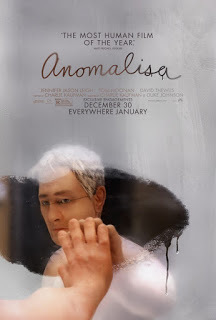 Charlie Kaufman’s return to directing seven years after Synecdoche, New York is, it turns out, significant. It gives Kickstarter, which is how it was funded, and the 2015 Telluride film festival, where it has premiered, their first real masterpieces. It innovates with stop-motion in ways your brain struggles to compute. Kaufman and co-director Duke Johnson offer images so moving and yet also so filthy Anomalisa might just make the first R-rated best animation Oscar winner.
Charlie Kaufman’s return to directing seven years after Synecdoche, New York is, it turns out, significant. It gives Kickstarter, which is how it was funded, and the 2015 Telluride film festival, where it has premiered, their first real masterpieces. It innovates with stop-motion in ways your brain struggles to compute. Kaufman and co-director Duke Johnson offer images so moving and yet also so filthy Anomalisa might just make the first R-rated best animation Oscar winner. And it addresses in new and fruitful ways the kinds of questions cinema sometimes aspires to answer. What does love look like? How does it feel to be deeply disconnected from the rest of the race? And, to quote its hero: “What is it to be human? To ache?”
That hero is Michael Stone, a famous-in-his-field inspirational speaker who has written a bestseller on customer service and is making a one-night business trip to Cincinnati from Los Angeles. He lands at the airport, goes to the hotel, orders room service and has encounters with various women – including an emotional ex called Donna, and Lisa, a charming telesales agent – before he delivers his keynote speech.
Michael is voiced by David Thewlis, retaining his Lancashire accent (and nailing his best part since Naked), Lisa by Jennifer Jason Leigh and everyone else by Tom Noonan. Noonan has a calm, normal voice, unmoderated whether he’s Michael’s wife, his son, the bar staff, the ex, a cabbie or a sex shop worker.
And not only does everyone save Michael and Lisa sound the same, they look the same, too. Only the hairstyle or gender (or species) switch as the smooth, gormless faces remain constant. These are humanised crash test dummies: each head divided into a number of plates - for ease of manipulation, presumably, but also to heighten the sense of uncanny construct.
Michael and Lisa, on the other hand, are more photorealistic. He has sunken eyes, stubble, a thousand-yard-stare, a face you forget isn’t flesh. She has a facial burn and a garrulousness shaped by shyness. They have bodies too: appallingly, amazingly realistic torso-thickened frames which tense and shudder like the real deal, and which we see naked in one extraordinary sequence that helped land the movie that rating (for “strong sexual content, graphic nudity and language”). But the real coup here is not Team America-style puppet porn: it’s that a scene which starts out earning gasps and laughs turns so touching, even erotic.
More here/
Published on December 10, 2015 01:30

